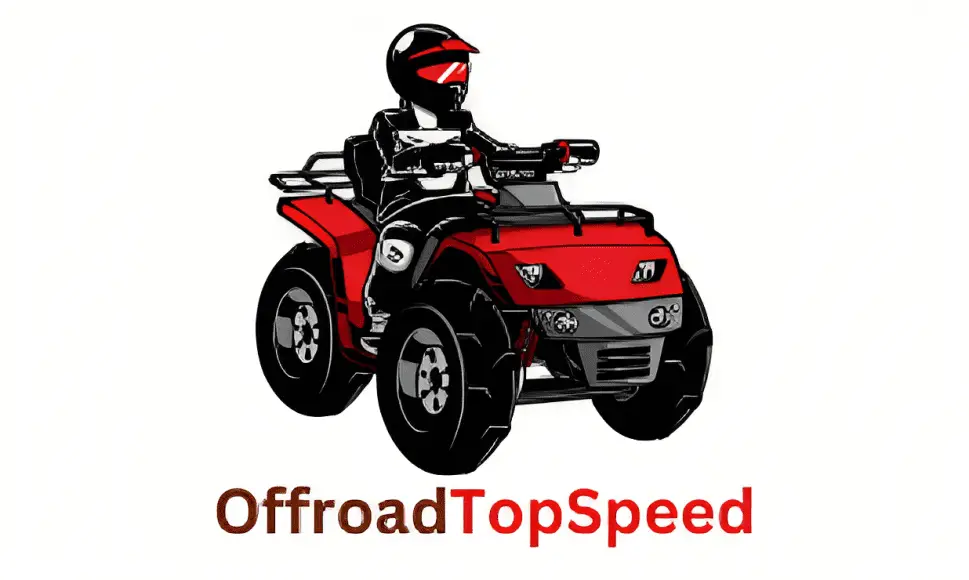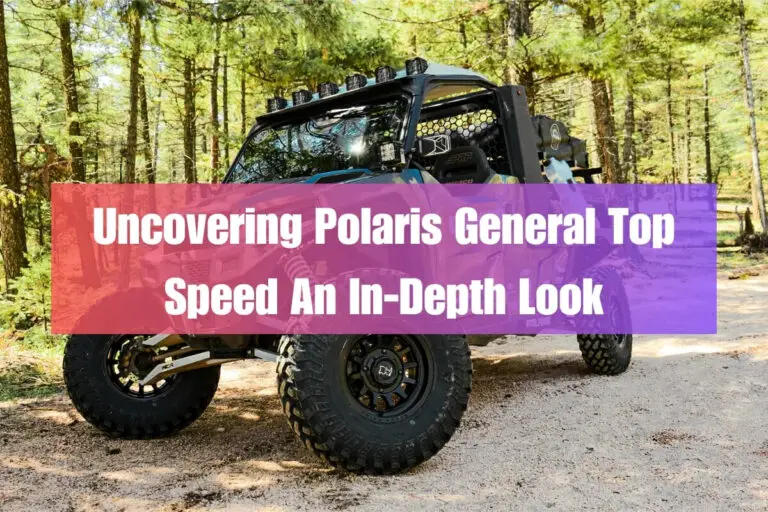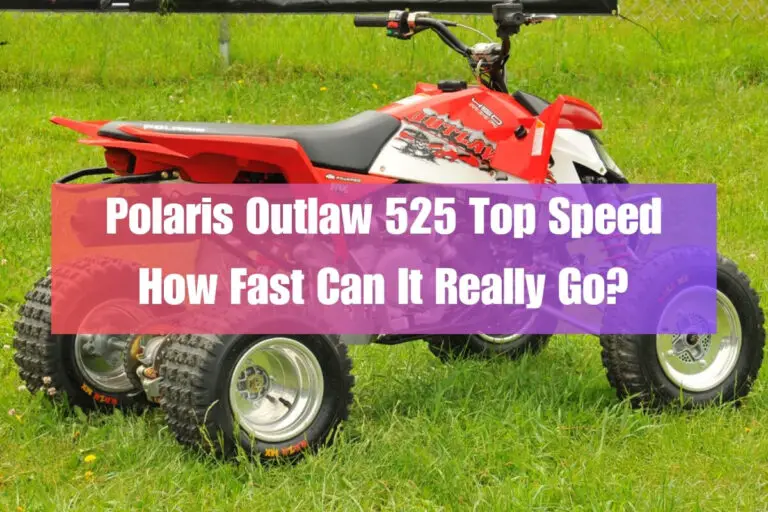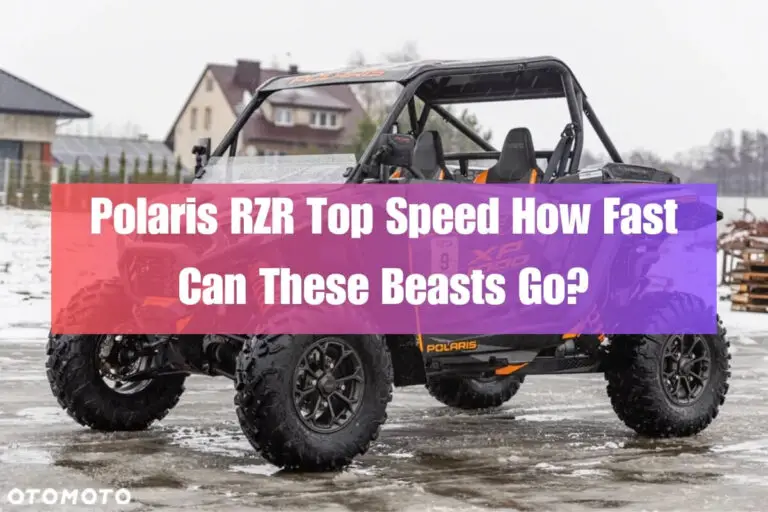Polaris Ranger 500 Top Speed: A Comprehensive Guide
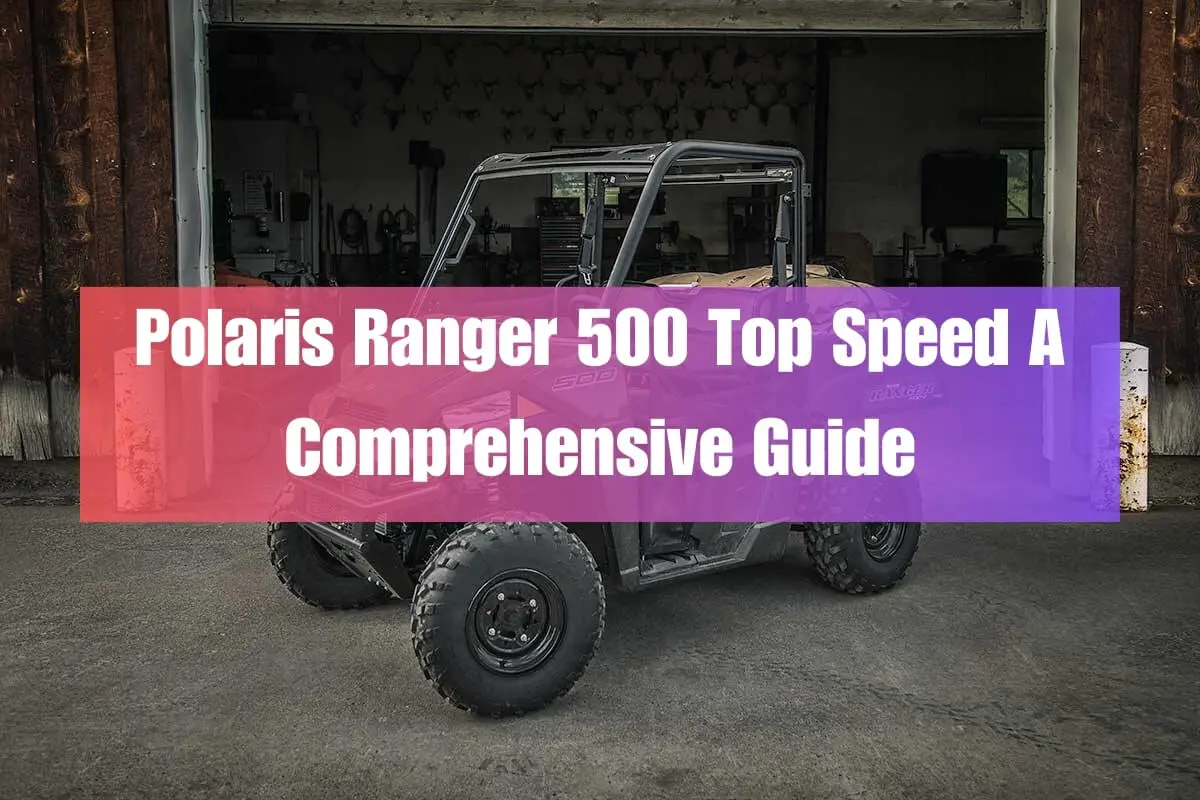
Are you in the market for a powerful and versatile utility terrain vehicle (UTV)? If so, the Polaris Ranger 500 is likely on your radar. This popular model from Polaris is known for its impressive performance capabilities, including a respectable top speed.
This guide is about the Polaris Ranger 500’s top speed. It talks about the specs and what owners say about the speed.
Polaris Ranger 500 Model Overview
Before we delve into the nitty-gritty of top speed, let’s first understand what makes the Polaris Ranger 500 stand out. This mid-size UTV boasts a robust 32-horsepower, 498cc liquid-cooled, 4-stroke engine with electronic fuel injection. It’s built to tackle steep grades and elevation changes without breaking a sweat.
One of the highlights of the Ranger 500 is its smooth and quiet operation, even at higher speeds and RPMs. The engine purrs, making it a comfortable ride for extended periods.
Pricing and Availability
The 2022 Polaris Ranger 500 has a suggested retail price (MSRP) of $9,999, with a base price of $5,865. Prices may vary based on location, dealer markups, and any additional accessories or packages.
You can find the Ranger 500 at authorized Polaris dealerships across the United States and Canada, as well as through online retailers that specialize in powersports equipment.
Performance Breakdown
Now, let’s get to the heart of the matter: the Polaris Ranger 500’s top speed. According to Polaris, this UTV can reach a top speed of 44 miles per hour (mph) or 70.8 kilometers per hour (km/h).
While this may not seem blistering fast compared to some performance-oriented UTVs, the Ranger 500 is designed primarily for utility purposes. Its top speed is more than adequate for most off-road adventures, trail riding, and hauling tasks.
Acceleration
In addition to its respectable top speed, the Ranger 500 offers solid acceleration thanks to its powerful engine and efficient drivetrain. According to user reports, it can go from 0 to 30 mph (0 to 48 km/h) in under 5 seconds, which is impressive for a utility vehicle of its size and weight.
Specifications Table
To better understand the Polaris Ranger 500’s performance capabilities, let’s take a look at some key specifications:
| Specification | Value |
|---|---|
| Engine | 498cc Liquid-Cooled 4-Stroke Single Cylinder |
| Horsepower | 32 HP |
| Drivetrain | On-Demand True AWD/2WD/VersaTrac Turf Mode |
| Transmission | Automatic PVT H/L/N/R/P |
| Brakes | 4-Wheel Hydraulic Disc |
| Suspension (Front/Rear) | MacPherson Strut 9 in / Dual A-Arm, IRS 10 in |
| Ground Clearance | 10 in (25.4 cm) |
| Payload Capacity | 1,000 lb (453 kg) |
| Towing Capacity | 1,500 lb (680 kg) |
With its robust engine, capable drivetrain, and well-designed suspension system, the Polaris Ranger 500 is built to deliver a smooth and comfortable ride, even at higher speeds.
Factors Affecting Top Speed
While the Polaris Ranger 500 has a stated top speed of 44 mph, several factors can influence its actual real-world performance. Understanding these factors can help you manage your expectations and optimize the vehicle for maximum speed when needed.
Terrain Conditions
One of the most significant factors affecting top speed is the terrain you’re riding on. The Ranger 500 is designed for off-road use, and its top speed may vary depending on the surface conditions.
On flat, smooth trails or hard-packed dirt roads, you can expect to reach the stated top speed more easily. However, if you’re navigating through rough, rocky terrain or steep inclines, the top speed will likely be lower due to the increased resistance and traction requirements.
Payload and Hauling Capacity
Another factor that can impact top speed is the weight you’re carrying. The Polaris Ranger 500 has an impressive payload capacity of 1,000 lb (453 kg) and a towing capacity of 1,500 lb (680 kg).
While these capacities are excellent for utility purposes, loading the Ranger 500 to its maximum limits will undoubtedly affect its acceleration and top speed. The added weight will put more strain on the engine and drivetrain, resulting in slower acceleration and potentially lower top speeds.
Tire Size and Type
The tires you choose for your Polaris Ranger 500 can also play a role in determining its top speed. The stock tires are designed for a balance of on-road and off-road performance, but switching to more aggressive off-road tires may slightly decrease the top speed due to increased rolling resistance.
Conversely, upgrading to low-profile, high-performance tires can potentially increase the top speed, but at the cost of off-road capability and ride comfort.
Modifications and Aftermarket Upgrades
Like many UTVs, the Polaris Ranger 500 is highly customizable, and there are numerous aftermarket modifications available that can enhance its performance, including top speed. We’ll explore some of these modifications later in the article.
Owner Reviews and Experiences
To better understand the real-world performance of the Polaris Ranger 500, let’s take a look at what actual owners have to say about its top speed capabilities.
Positive Reviews
Many owners praise the Ranger 500’s top speed, especially considering its primary utility focus. Here are a few positive reviews:
“The Ranger 500 may not be the fastest UTV out there, but its top speed of around 45 mph is more than enough for most of my needs. It’s a perfect balance of power and utility.” – John D., Texas
“I’ve been able to hit the claimed top speed of 44 mph on flat, well-maintained trails, which is impressive for a machine in this class. The engine has plenty of grunt, and the acceleration is surprisingly good.” – Sarah W., Colorado
Negative Reviews
While most owners seem satisfied with the Ranger 500’s top speed, there are a few negative reviews worth noting:
“I wish the Ranger 500 had a bit more top-end power. While 44 mph is decent, it feels like it starts running out of steam after 35-40 mph.” – Mike R., Florida
“For serious off-road adventures and high-speed trail riding, the Ranger 500’s top speed may be a bit limiting. I’d recommend looking at some of the more performance-oriented models if speed is a priority.” – Tom H., California
Overall, most owners seem content with the Polaris Ranger 500’s top speed, especially when considering its primary utility focus and impressive hauling capabilities.
Competitor Comparison
To better understand how the Polaris Ranger 500’s top speed stacks up, let’s compare it to some of its closest competitors in the mid-size UTV segment:
- Kawasaki Mule Pro-FX EPS: Top speed of 40 mph (64 km/h)
- Can-Am Defender MAX DPS HD10: Top speed of 45 mph (72 km/h)
- Honda Pioneer 500: Top speed of 38 mph (61 km/h)
- Yamaha Wolverine X2 R-Spec EPS SE: Top speed of 45 mph (72 km/h)
As you can see, the Polaris Ranger 500’s top speed of 44 mph is right in line with its closest competitors, with a few models edging it out slightly. However, it’s important to note that top speed is just one aspect of performance, and these UTVs may differ in other areas such as acceleration, hauling capacity, and off-road capability.
Modifications to Increase Top Speed
While the Polaris Ranger 500’s stock top speed is respectable, some owners may want to squeeze out a bit more performance. Fortunately, there are several aftermarket modifications and upgrades available that can potentially increase the top speed of this UTV.
Clutch Kit Upgrades
One of the most popular modifications for boosting top speed is installing an aftermarket clutch kit. These kits typically include a higher-stall clutch, stronger clutch springs, and optimized weights, allowing the engine to reach higher RPMs and potentially increasing the top speed.
Some popular clutch kit options for the Polaris Ranger 500 include offerings from brands like EPI Performance, Dalton Clutches, and Team Clutch Components. Installation should be done by a professional mechanic or someone with experience working on UTVs.
Performance Air Intake and Exhaust Systems
Another way to unlock more power and potentially increase top speed is by upgrading the air intake and exhaust systems. An aftermarket high-flow air intake can improve airflow to the engine, while a less-restrictive exhaust system can help the engine breathe better and run more efficiently.
Brands like Uni Filter, K&N, and S&B offer performance air intake kits for the Ranger 500, while companies like Maverick, HMF, and Big Gun offer exhaust system upgrades.
Engine Performance Chips and Tuners
For those looking for a more comprehensive performance upgrade, engine performance chips and tuners can be a viable option. These devices can remap and optimize the engine’s fuel and ignition systems, potentially increasing horsepower and torque output, which can translate to higher top speeds.
Some popular tuning options for the Polaris Ranger 500 include devices from Dynojet, Vance & Hines, and FuelPak.
Gearing and Transmission Modifications
While less common, some owners may opt for gearing and transmission modifications to increase top speed. This could involve swapping out the stock gears for higher numerical ratios or installing an aftermarket transmission with closer gear ratios.
However, it’s important to note that these modifications can significantly impact the Ranger 500’s low-end torque and hauling capabilities, so they may not be suitable for everyone.
Professional Tuning and Installation
Regardless of the modification you choose, it’s highly recommended to have any performance upgrades installed and tuned by a professional or experienced UTV mechanic. Improper installation or tuning can lead to decreased reliability, drivability issues, or even potential engine damage.
Pros and Cons of the Polaris Ranger 500
To help you make an informed decision about whether the Polaris Ranger 500 is the right UTV for you, let’s explore some of its key pros and cons:
Pros
- Respectable top speed of 44 mph for a utility-focused UTV
- Smooth and quiet operation, even at higher speeds
- Impressive payload and towing capacities
- Comfortable and capable off-road performance
- Extensive range of factory-approved accessories and modifications
Cons
- Top speed may be limiting for hardcore off-road enthusiasts and high-speed trail riding
- Acceleration can feel a bit sluggish when heavily loaded
- Limited storage space compared to larger UTVs
- No built-in roof or windshield (available as accessories)
- Relatively basic interior features and amenities in the base model
Overall, the Polaris Ranger 500 strikes a good balance between performance, utility, and affordability, making it a popular choice for those seeking a capable and versatile UTV for work and recreational purposes.
Top Alternatives to the Polaris Ranger 500
While the Polaris Ranger 500 is a solid choice in the mid-size UTV segment, it’s always a good idea to explore alternatives to find the perfect fit for your needs. Here are some top alternatives to consider:
Honda Pioneer 500
The Honda Pioneer 500 is a direct competitor to the Ranger 500, offering a similar level of performance and utility features. It has a top speed of 38 mph, slightly lower than the Ranger, but boasts Honda’s renowned reliability and build quality.
Kawasaki Mule Pro-FX
If you’re looking for a more rugged and capable off-road machine, the Kawasaki Mule Pro-FX could be an attractive option. With a top speed of 40 mph and a more robust suspension system, it’s built to tackle challenging terrain with ease.
Can-Am Defender MAX DPS HD10
For those who prioritize hauling and towing capabilities, the Can-Am Defender MAX DPS HD10 is worth considering. It offers a class-leading towing capacity of 2,000 lb and a top speed of 45 mph, making it a versatile choice for both work and play.
Yamaha Wolverine X2 R-Spec EPS SE
If you’re willing to spend a bit more for increased performance and off-road capability, the Yamaha Wolverine X2 R-Spec EPS SE could be an excellent alternative. With a top speed of 45 mph and a robust suspension system, it’s designed for high-speed trail riding and adventure.
Ultimately, the right alternative will depend on your specific needs, budget, and personal preferences. It’s always a good idea to test drive and compare different models before making a final decision.
Who Should Buy the Polaris Ranger 500?
Based on its performance capabilities, features, and overall value proposition, the Polaris Ranger 500 is an ideal choice for the following types of buyers:
- Recreational riders and outdoor enthusiasts who need a capable and versatile UTV for trail riding, hunting, camping, and other outdoor activities.
- Homeowners and landowners who require a reliable utility vehicle for hauling, towing, and general property maintenance tasks.
- Farmers, ranchers, and those in the agricultural industry who need a dependable workhorse for various farm duties and chores.
- Cost-conscious buyers who want a well-rounded UTV without breaking the bank.
Who Should Not Buy the Polaris Ranger 500?
While the Polaris Ranger 500 is a great choice for many, it may not be the best fit for everyone. Here are a few scenarios where you might want to consider alternative options:
- If you prioritize maximum speed and high-performance off-road capabilities, you may want to look at sportier and more powerful UTV models.
- If you frequently carry heavy loads or tow large trailers, a larger UTV with higher payload and towing capacities might be a better choice.
- If you require a UTV with more interior space, comfort features, and amenities, some of the larger and more premium models may better suit your needs.
Ultimately, it’s important to carefully assess your specific requirements and preferences before making a purchase decision to ensure you get the right UTV for your needs.
Troubleshooting Common Issues
Like any vehicle, the Polaris Ranger 500 can sometimes experience issues that may affect its performance, including top speed. Here are some common problems and potential fixes:
Engine Hesitation or Bogging Down
If you’re experiencing engine hesitation, bogging down, or a lack of power at higher speeds, the issue could be related to various factors such as a clogged air filter, faulty fuel pump, or ignition system problems. Checking and replacing these components, as well as performing a thorough tune-up, can often resolve these issues.
Transmission Slipping or Shifting Issues
Transmission problems can also impact the Ranger 500’s performance and top speed. If you notice slipping, delayed shifts, or difficulty shifting gears, it may be time to have the transmission inspected and serviced by a qualified technician.
Tire Wear or Pressure Issues
Worn-out or improperly inflated tires can significantly affect the Ranger 500’s handling and top speed capabilities. Regular tire inspections and maintaining the recommended tire pressures can help ensure optimal performance.
Suspension and Steering Issues
Problems with the suspension or steering components can lead to instability and decreased control at higher speeds. If you notice excessive vibrations, wandering, or difficulty steering, it’s important to have these systems inspected and repaired as needed.
If you encounter any persistent issues that you cannot resolve on your own, it’s always best to consult with an authorized Polaris dealer or a qualified UTV mechanic for proper diagnosis and repair.
Frequently Asked Questions
What is the top speed of the Polaris Ranger 500?
According to Polaris, the Ranger 500 has a top speed of 44 miles per hour (70.8 kilometers per hour).
Can the top speed of the Ranger 500 be increased?
Yes, there are various aftermarket modifications and upgrades available that can potentially increase the top speed of the Polaris Ranger 500, such as clutch kits, performance air intakes, exhaust systems, and engine tuners.
How does the Ranger 500’s top speed compare to other UTVs in its class?
The Polaris Ranger 500’s top speed of 44 mph is competitive within the mid-size UTV segment, with some models slightly edging it out and others falling a bit behind.
Is the Ranger 500 suitable for high-speed trail riding?
While the Polaris Ranger 500’s top speed of 44 mph is respectable, it may not be the ideal choice for hardcore high-speed trail riding or off-road racing. Its primary focus is on utility and versatility, rather than outright performance. For serious high-speed adventures, you may want to consider more performance-oriented UTV models designed specifically for that purpose.
Can the Ranger 500 tow and haul at its top speed?
It’s generally not recommended to tow or haul heavy loads at the Ranger 500’s top speed of 44 mph. Doing so can put excessive strain on the engine, drivetrain, and suspension components, potentially leading to premature wear or failure. It’s best to reduce your speed significantly when towing or hauling to ensure optimal safety and vehicle longevity.
How does the Ranger 500’s fuel economy compare at higher speeds?
Like most vehicles, the Polaris Ranger 500’s fuel economy will suffer at higher speeds due to increased wind resistance and engine load. While Polaris doesn’t provide specific fuel economy figures at different speeds, users generally report lower fuel efficiency when consistently operating the Ranger 500 at or near its top speed.
Can the Ranger 500’s top speed be affected by altitude or temperature?
Yes, environmental factors such as altitude and temperature can potentially impact the Ranger 500’s top speed performance. At higher altitudes, where the air is thinner, the engine may produce slightly less power, affecting its ability to reach its stated top speed. Similarly, extreme temperatures (hot or cold) can also influence engine performance and, consequently, top speed.
How frequently should the Ranger 500’s fluids and components be serviced for optimal performance?
To maintain the Polaris Ranger 500’s performance, including its top speed capabilities, it’s essential to follow the recommended service intervals for fluid changes, air filter replacements, and other maintenance tasks. Refer to your owner’s manual or consult with an authorized Polaris dealer for specific service recommendations based on your usage and operating conditions.
Final Thoughts
The Polaris Ranger 500 is a well-rounded and capable UTV that offers a respectable top speed of 44 mph, making it suitable for a wide range of recreational and utility applications. While its top speed may not be the primary focus, it strikes an excellent balance between performance, versatility, and affordability.
Whether you’re an outdoor enthusiast, landowner, or farmer, the Ranger 500 delivers a smooth and comfortable ride, impressive hauling and towing capabilities, and a host of customization options to tailor it to your specific needs.
Remember, while top speed is an important consideration, it’s not the only factor to evaluate when choosing a UTV. Consider your intended use, terrain conditions, and overall requirements to ensure you make the right choice for your needs.
If you’re in the market for a dependable and versatile UTV that can handle work and play with ease, the Polaris Ranger 500 is definitely worth a closer look. With its robust performance, extensive accessory catalog, and competitive pricing, it’s no wonder this mid-size UTV has earned a reputation as a go-to choice for many buyers.
